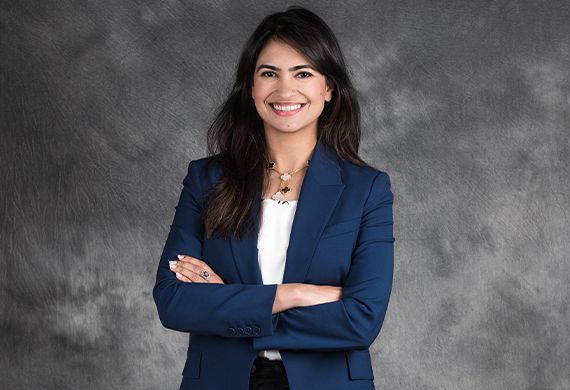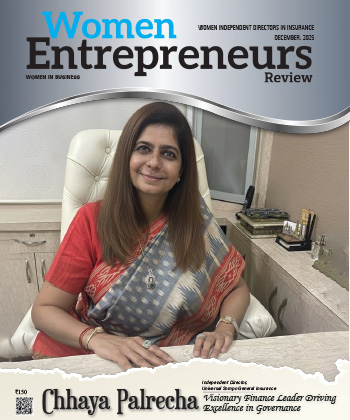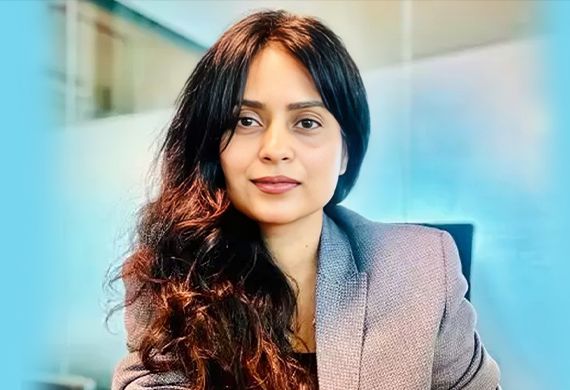
Redefining Industrial Leadership: Women at the Forefront of the Bioplastics Revolution
By: Avantika Saraogi, Executive Director, BCML
Avantika Saraogi is a visionary leader at BCML, is driving India’s first PLA bioplastics plant, integrating sustainability with innovation. She leads operations across bioplastics, sugarcane development, and strategy, championing environmental impact, farmer upliftment, and legacy-driven growth inspired by her grandmother, Padma Shri Meenakshi Saraogi.
In an insightful interaction with Women Entrepreneurs Review Magazine, Avantika Saraogi shares her insights on the growing momentum of bioplastics and eco-innovation in emerging economies. Avantika also highlights how women leaders can leverage natural resources to build scalable, sustainable industries and drive systemic change.
In today’s sustainability-driven market, how do you perceive the real momentum for bioplastics and eco-innovations?
The momentum is strong and rooted in necessity, particularly in economies where environmental challenges intersect with socio-economic disparities. At Balrampur Bioyug, our PLA venture uses sugar as its core input—a forward integration of BCML—marking a tangible step toward a compostable, scalable alternative to fossil-based plastics.
Eco-innovation must be grounded in authenticity, not optics. For me, this legacy of intention was shaped by my late grandmother, Padma Shri Meenakshi Saraogi, who forged deep trust with farming communities. It takes vulnerability to truly care—and women leaders often lead from that space. That’s where real relationships, and real transformation, begin.
As regulatory landscapes evolve to curb fossil-based plastics, how can women leaders uniquely harness agricultural and natural resources to build resilient, scalable bio-based industries?
Women leaders often lead with context—and in India, that context is agricultural abundance coupled with processing gaps. Balrampur Bioyug was built on this insight: that sugarcane-derived feedstock, particularly from our existing mills, could be transformed into high-performance, compostable PLA. Scalability depends on resilient supply chains, and resilience comes from community ownership and localized processing.
Women leaders bring an instinct for collaborative problem-solving, often engaging voices that conventional industrial models overlook—especially smallholder farmers and rural women entrepreneurs. That makes the solution not just scalable, but sustainable in the truest sense.
How do you see bio-based materials reshaping global economic power? What leadership shifts are essential for women to influence this transition at systemic levels?
Bio-based materials are shifting power toward geographies that can grow, not just extract. Our PLA project through Balrampur Bioyug positions sugarcane—not oil—as the feedstock of the future. This redefines not just materials, but influence. Systemic leadership will require women to step into roles where financial capital, regulatory voice, and industrial policy intersect. For me, influence also comes from continuity.
I stand on the shoulders of a woman—my grandmother—who led BCML when it was rare for women to be in boardrooms, let alone in mills. Women who bring history, heart, and strategic insight are well-equipped to lead this new economy.
When driving digital transformation and mechanization in traditional sectors, what challenges cultural or structural do women leaders face, and how have you navigated these?
In legacy industries like sugar and manufacturing, digital transformation is often perceived as optional, not essential—and when a woman pushes for it, the scepticism can double. Although, my experience was not the same necessarily.
At BCML and now with Balrampur Bioyug, we’ve embedded digital tools across operations, from agri-data recording & digestion to process insights & optimization. But convincing teams to adopt these changes requires not just proof of concept, the real challenge isn’t technology—it’s comfort zones.
I’ve learned that change happens faster when you align digital initiatives with frontline pain points, not top-down KPIs. Structural challenges remain—especially around who gets to decide what 'innovation' looks like—but credibility and consistent results slowly reshape the narrative.
How can women leaders redefine incentives to create both climate-positive impact and shift gender norms in rural or underserved areas?
At Balrampur Bioyug, our PLA initiative isn’t just a material shift—it’s a social one. By building this forward integration within our sugar value chain, we’re creating opportunities across rural ecosystems with a very healthy women employment ratio. And when women in these communities are brought into the fold—not just as labor but as employees—it alters the dynamics of both empowerment and perception.
When women in villages participate in high-tech, bio-based industries, it subtly but powerfully shifts what’s considered “appropriate” work or aspiration. The environmental dividend is strongest when the social dividend is baked in.
LAST WORD
You must work twice as hard to be heard, but your impact must speak for itself. The hard truth is that legacy industries don’t change easily, and they rarely welcome disruption. But you don’t need to shout to lead—you need to show up consistently, deliver persistently, and care deeply.
That’s the kind of leadership my grandmother exemplified. She broke ground in boardrooms and in villages—quietly but powerfully. If I’ve learned one thing, it’s that legacy is not about being the first or the loudest. It’s about opening doors wide enough for others to walk through and carry it forward.
Most Viewed
- 1 Women's Health Startup HerMD Closing Doors Amid Industry Challenges
- 2 5 Famous Women in Indian Armed Forces
- 3 Saudi Women No longer Require Male Permission for Clothing Choices, says Prince MbS
- 4 Kolkata Medtech Startup Innovodigm Raises Rs 5.5 Crore Seed Funding Led by IAN Group
- 5 Yamunanagar's Kashish Kalra Honoured after Securing 111th Rank in UPSC Civil Services Exam
- 6 Madurai Appoints Its First Woman Corporation Head
- 7 IAS Vijayalakshmi Bidari Appointed as the new Nagpur Divisional Commissioner
- 8 American Entrepreneur Lucy Guo Overtakes T Swift to become Youngest Female Billionaire
- 9 ICC Women's World Cup 2025 Trophy Showcased at Indore's Holkar Stadium
- 10 Aparna Saxena's Beauty Venture AntiNorm Launches in India
- 11 Vidya Nataraj Co-Founded BlueStone Jewellery & Lifestyle files IPO
- 12 5 Women Freedom Fighters of India
- 13 Dr. G Krishnapriya appointed as CEO for Trichy
- 14 M3M & Sirona Partner to Introduce Menstrual Hygiene Vending Machines in 15 Locations
- 15 Punjab Govt launches SHE Cohort 3.0 Supporting Tech-led Women Startups
- 16 Indian origin Lawyer, Sweena Pannu appointed as the US New Superior Court Judge
- 17 The Aurora Tech Award recognizes 4 Indian Women-led Startups
- 18 Kerala's Republic Day parade featured an all-female tableau
- 19 Manisha Kabbur Becomes Karnataka's First Woman International Karate Coach
- 20 Director K. S. Ravikumar's Daughter Maalica Ravikumar Launches Life Coaching Company 'Evergrowth Academy' for Women
- 21 Leezu's Raises Pre-Seed Funding to Accelerate Growth in Sexual Wellness Industry
- 22 Sattu: Super-easy summer drink for PCOS gut healing
- 23 Swathi Nelabhatla creates Sitha App, India's First Women-Exclusive Gig Platform
- 24 7 Timeless Female Kathak Dancers & their Iconic Legacies
- 25 Meet 7 Iconic Women Architects of Modern India & their Most Impactful Work
- 26 This Woman-led Insuretech Startup is Helping Bridge the Education Financing Gap in India
- 27 Women Leaders Share Lessons Learnt from India Women's WC Win
- 28 5 Enterprising Women Founders Powering Singapore's Tech & Innovation Landscape
- 29 4 Women. 4 Stories. One Vision for Smarter, Stronger Healthcare
- 30 Global Gender Gap Narrows to 68.8%, But Full Equality 123 Years Away: WEF Report 2025
- 31 Changemakers: 7 Women Entrepreneurs Taking the Make in India Movement Forward
- 32 Meet Lucy Guo, The Youngest Self-Made Female Billionaire Disrupting Tech
- 33 How Women are Driving India's Festive Online Shopping Surge






